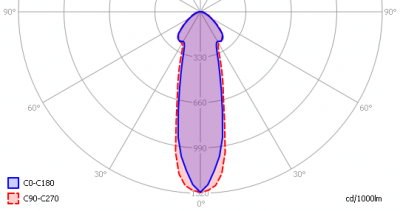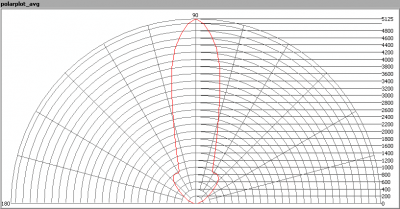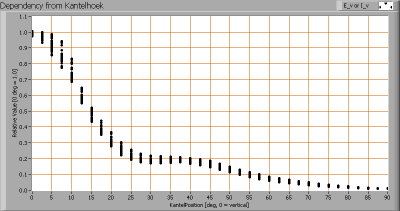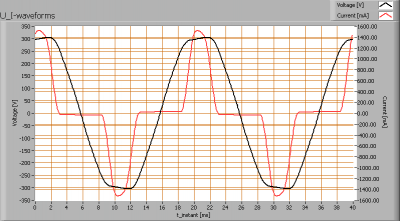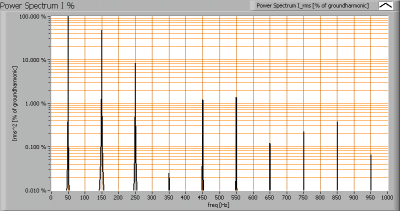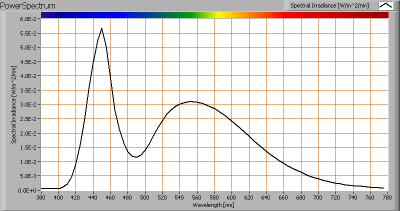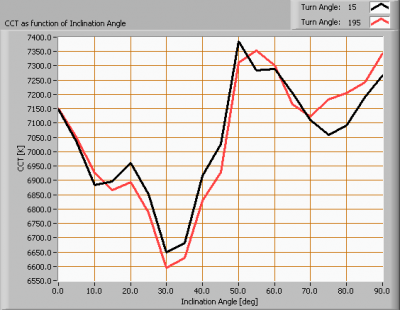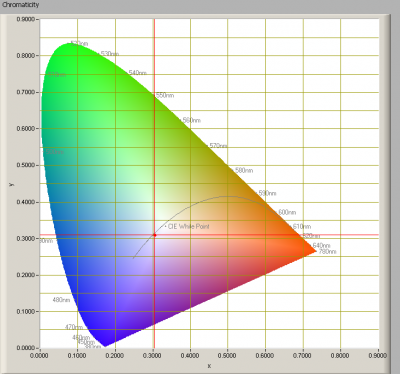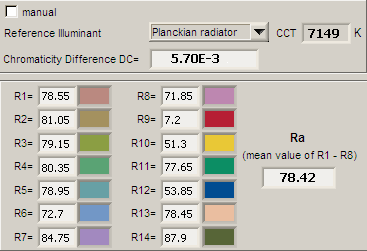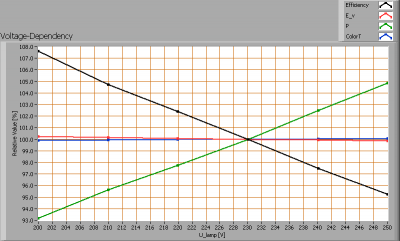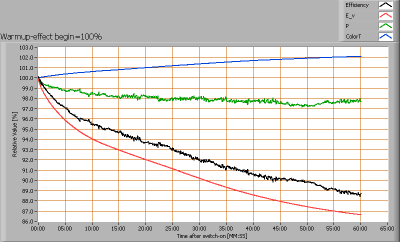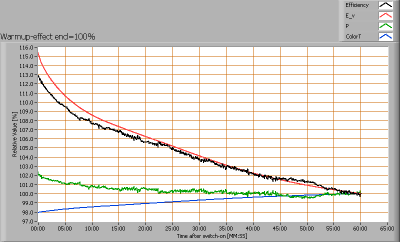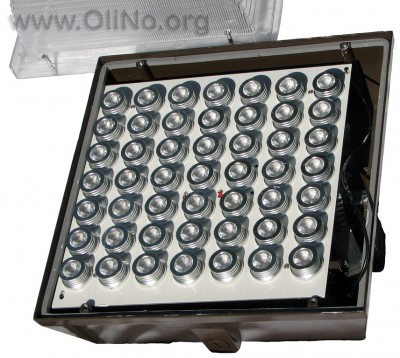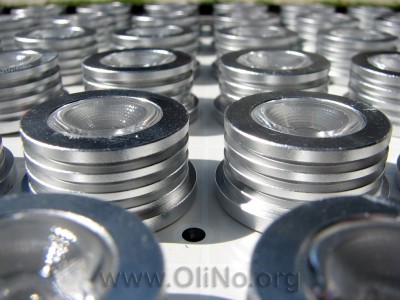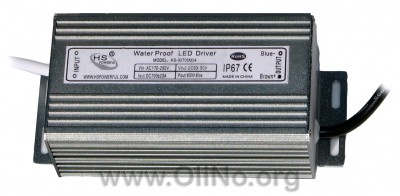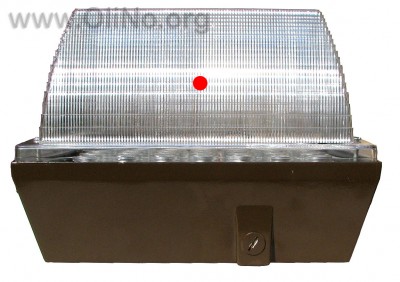Line Lite International BV Petrol Gas Station Light 50 watt IP65
Posted by Marcel van der Steen in Led lights, Light measurements No Comments» presents a big downlighter wit 49 leds. It needs 230 V AC power. This article shows the measurement results. Many parameters are also found in the Eulumdat file.
presents a big downlighter wit 49 leds. It needs 230 V AC power. This article shows the measurement results. Many parameters are also found in the Eulumdat file.
See this overview for a comparison with other light bulbs.
Summary measurement data
| parameter | meas. result | remark |
|---|---|---|
| Color temperature | 7149 K | Cold white |
| Luminous intensity Iv | 5125 Cd | |
| Beam angle | 29 deg | |
| Power P | 56 W | |
| Power Factor | 0.78 | For every 1 kWh net power consumed, there has been 0.8 kVAhr for reactive power.. |
| Luminous flux | 3904 lm | |
| Luminous efficacy | 70 lm/W | |
| CRI_Ra | 78 | Color Rendering Index. |
| Coordinates chromaticity diagram | x=0.3052 and y=0.3106 | |
| Fitting | 230V | This is grid voltage. |
| L x W x H external dimensions | 315 x 315 x 225 mm | External dimensions of the down lighter. |
| L x W luminous area | 275 x 275 mm | Dimensions of the luminous area (used in Eulumdat file). This is equal to the surface of the diffusorplate. |
| General remarks | The ambient temperature during the whole set of measurements was 25.5 deg C.
Warm up effect: during the warm up time the illuminance will decrease with 15 %. Voltage dependency: the power consumption is somewhat dependent on the voltage, this behavior is linear. This article contains additional photos of the lightbulb and powersupplies used. Also is explained where the focal point has been put for this lightbulb. |
|
| Measurement report (PDF) | ||
| Eulumdat file |  |
Right click on icon and save the file. |
Eulumdat light diagram
An interesting graph is the light diagram, indicating the intensity in the C0-C180 and the C90-C270 plane. This light diagram below comes from the program Qlumedit, that extracts these diagrams from an Eulumdat file.
The light diagram giving the radiation pattern.
It indicates the luminous intensity around the light bulb. This light bulb has some small difference in light diagram between the C0-C180 and C90-C270 plane. The planes are defined through the prismatic transparent cover, and each plane divides this cover in two equally sized parts. One would not have expected a difference in light diagram between these planes, however a small difference is measured.
The bundle is small, showing that the prismas in the cover do bundle the light coming from the LED-array.
The unit is Cd/1000lm, meaning the intensity in Cd assuming there would be 1000 lumen in the measured light bulb. This enables comparing different types of light bulbs.
Illuminance Ev at 1 m distance, or luminous intensity Iv
Herewith the plot of the averaged luminous intensity Iv as a function of the inclination angle with the light bulb.
The radiation pattern of the light bulb.
This radiation pattern is the average of the light output of the light diagram given earlier. Also, in this graph the luminous intensity is given in Cd.
These averaged values are used (later) to compute the lumen output.
Intensity data of every measured turn angle at each inclination angle.
This plot shows per inclination angle the intensity measurement results for each turn angle at that inclination angle. There are little differences in illuminance values for different turn angles. However for further calculations the averaged values will be used.
When using the average values per inclination angle, the beam angle can be computed, being 29 degrees. This is the average value, however as there is little difference in light diagram between the C0-C180 and C90-C270 planes, this angle value is accurate for any C-plane trough the light bulb.
Luminous flux
With the averaged illuminance data at 1 m distance, taken from the graph showing the averaged radiation pattern, it is possible to compute the luminous flux.
The result of this computation for this light spot is a luminous flux of 3904 lm.
Luminous efficacy
The luminous flux being 3904, and the power of the lightbulb being 56 W, yields a luminous efficacy of 70 lm/W.
A power factor of 0.78 means that for every 1 kWh net power consumed, a reactive component of 0.8 kVAr was needed.
| Light bulb voltage | 230 VAC |
| Light bulb current | 311 mA |
| Power P | 56 W |
| Apparent power S | 71 VA |
| Power factor | 0.78 |
Of this light bulb the voltage across ad the resulting current through it are measured and graphed.
Voltage across and current through the lightbulb
There are peaks in current near the tops of the voltage. This results in a waveform for the current that is different from the sineform of the voltage, resulting an a power factor less than 1.
Also the power spectrum of the current is determined.
Current power spectrum in % of the first harmonic (50 Hz).
The current peaks result in a current power spectrum with a considerable amount of higher harmonics.
Color temperature and Spectral power distribution
The spectral power distribution of this light bulb.
The measured color temperature is about 7150 K which is cold white.
This color temperature is measured straight underneath the light bulb. Below a graph showing the color temperature for different inclination angles.
Color temperature as a function of inclination angle.
The color temperature is given for inclination angles up to 90 degrees, since at higher angles there is almost no light output anymore.
The value remains constant within 8 %.
Chromaticity diagram
The chromaticity space and the position of the lamp’s color coordinates in it.
The light coming from this lamp is close to the Planckian Locus (the black path in the graph).
Its coordinates are x=0.3052 and y=0.3106.
Color Rendering Index (CRI) or also Ra
Herewith the image showing the CRI as well as how well different colors are represented (rendered). The higher the number, the better the resemblance with the color when a black body radiator would have been used (the sun, or an incandescent lamp).
Each color has an index Rx, and the first 8 indexes (R1 .. R8) are averaged to compute the Ra which is equivalent to the CRI.
CRI of the light of this lightbulb.
The value of 78 is (a bit) lower than 80 which is considered a minimum value for indoor usage.
Note: the chromaticity difference is 0.0057 indicates the distance to the Planckian Locus. Its value is higher than 0.0054, which means that the calculated CRI result is at the edge of being meaningful.
Voltage dependency
The dependency of a number of lamp parameters on the lamp voltage is determined. For this, the lamp voltage has been varied and its effect on the following lamp parameters measured: illuminance E_v [lx], the lamppower P [W], the (Correlated) Color Temperature [K] and the luminous efficacy [lm/W].
Lamp voltage dependencies of certain light bulb parameters, where the value at 230 V is taken as 100 %.
The consumed power varies a bit, in a linear way, when the voltage varies between 200-250 V.
When the voltage at 230 V varies with + and – 5 V, then the illuminance varies within 0.1 %, so when abrupt voltage changes occur this effect is not visible in the illuminance output.
Warm up effects
After switch on of a cold lamp, the effect of heating up of the lamp is measured on illuminance E_v [lx], color temperature CT or correlated color temperature CCT [K], the lamppower P [W] and the luminous efficacy [lm/W].
Effect of warming up on different light bulb parameters. At top the 100 % level is put at begin, and at bottom at the end.
The warm-up time is not finished after 1 hour. The illumination level is expected to drop no more than 15 %.
Additional photos
The led array behind the cover with prismatic sides.
A close up of the led array.
Two of these power supplies were used to drive the led-array.
Indication of the focal point.
The focal point is the photometric center of the light source. For this cover that has prismatic sides, the center of the cover needs to be taken (ref: EN 13032-1:2004 (E)).
